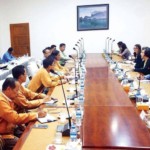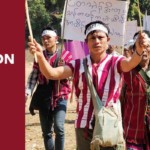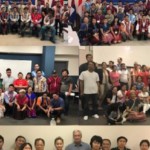The Irrawaddy | July 12, 2017
Myanmar has around 1.1 million refugees and internally displaced persons, and a lack of clear policies for their future reinstatement in society carries risks of fresh conflicts, according to a policy briefing by a Dutch think tank.
More than 60 years of civil war, natural disasters, ethno-religious and other conflicts have produced a complex and still shifting pattern of human displacement in the country, largely but not only in the border areas.
When and if conditions change, it is unclear how Myanmar will handle the task of restoring people to viable lives and futures in their places of origin.
The question is perhaps most immediately relevant to the situation of around 100,000 mainly Karen refugees on the Thailand-Burma border.
As donor support dwindles and a fragile ceasefire is maintained in Karen State, pressure is rising for a refugee return, while adequate plans for a voluntary, rights-based return program are not evident.
Purely ‘technical’ approaches to return and restitution for displaced people will not work, the policy briefing by the Transnational Institute argues.
Such approaches carry strong risks of creating more conflicts due to competing claims over land, it says.
“Overlapping land claims may pit displaced people against government or military elites as well as wealthy business actors and companies. Some… may also pit displaced people against environmental conservation organizations….or against other marginalized and vulnerable peoples, creating the risk of inflaming intercommunity or inter-ethnic tensions,’’ according to the briefing.
The risk of such additional conflicts means that the issue of the future of refugee and displaced must not be separated from wider discussions and policies over land use, the briefing argues.
However, Myanmar’s land policies remain highly problematic.
“Even within the rule of law, there are contradictions between different regulatory systems (i.e. Government of Myanmar laws vs. the National Land Use Policy
A key piece of national legislation – the 2012 Farmland Law – is unable in practice to protect farmers from land grabs by business interests supported by government officials, the authors argue.
In addition, the National Land Use Policy adopted in January 2016 by the previous government lacks formal legal status and is ineffective as long as the 2012 law remains in place, while the national status of land policies adopted by ethnic armed organizations such as the Karen National Union (KNU) remains unclear.
That deeply problematic overall land scenario means that although displaced people are especially affected by the issues, they are not the only ones, and their needs must be allied with and tied to broader national solutions, the paper argues.
It notes experiences in other countries that show “that it is vitally important to link displaced peoples’ rights and claims with the democratic land rights and claims of other marginalized, vulnerable and poor people.”
The paper concludes that the “worst case scenario for Myanmar today is any land or natural resource-related law, policy, program or initiative that would put the most marginalized and vulnerable people in competition with each other and make ‘poor on poor’ conflict more likely.”
What is needed, it says, is an integrated, ground-up approach to the IDP land issue that links with ground-up people’s initiatives to address wider land problems.
“In light of the deepening land polarization pushed by powerful forces, the key to any durable solution in Myanmar is linking return and restitution to wider, pro-people’s ‘right to land’ democratization initiatives at the grassroots levels.”
The Transnational Institute is a Netherlands-based think tank that has worked on policy issues in Myanmar for many years. The briefing titled “Re-Asserting Control: Voluntary Return, Restitution and the Right to Land for IDPs and Refugees in Myanmar” was funded by Sweden and the Swiss Agency for Development and Cooperation.
This article originally appeared on The Irrawaddy on July 12, 2017.
Read the full report (PDF) in English, here.




![‘The Burma Army Killed Him [Saw O Moo] – At Least the Government or the Army Should Commit to Not Do This Again’: Paul Sein Twa, Executive Director of KESAN](https://www.burmalink.org/wp-content/uploads/2018/05/Saw-O-Moo-commemoration-Paul-Sein-Twa-speaking-2-150x150.jpg)


